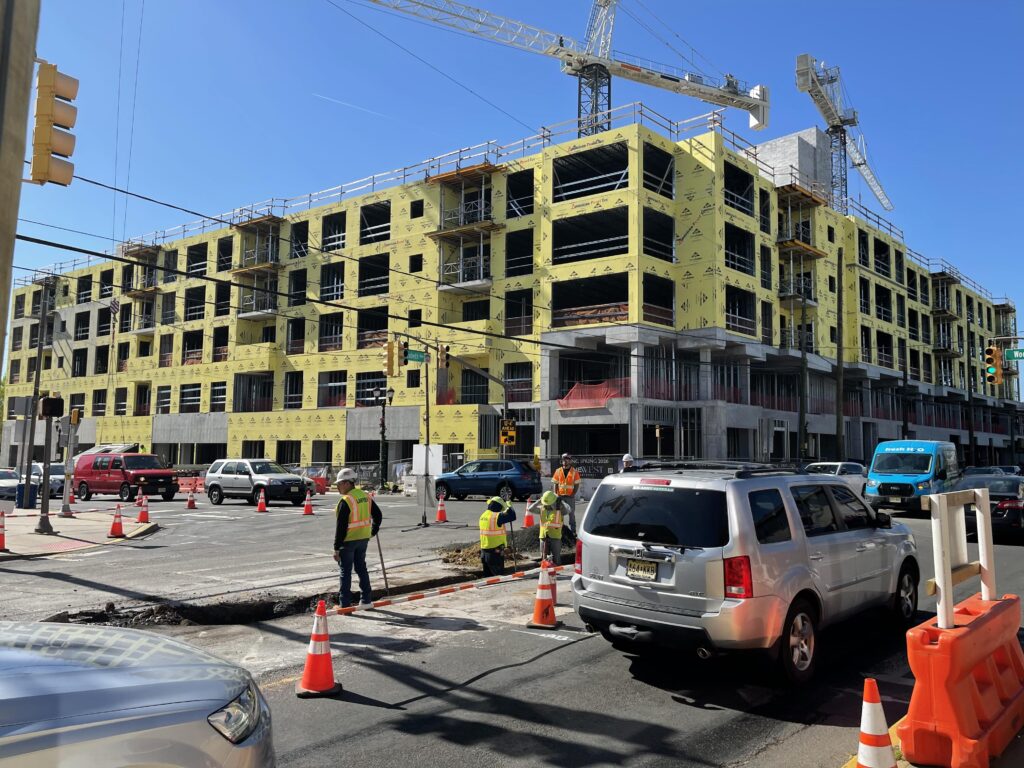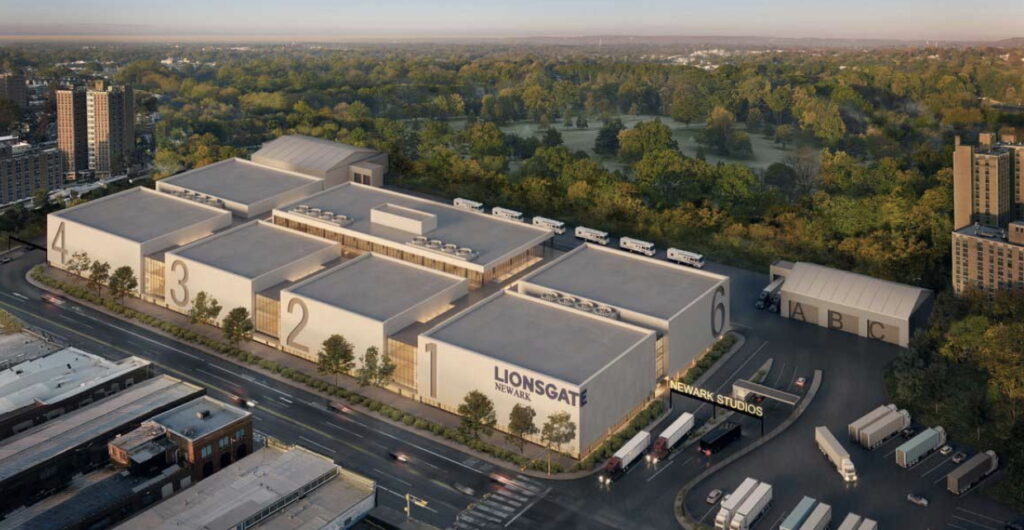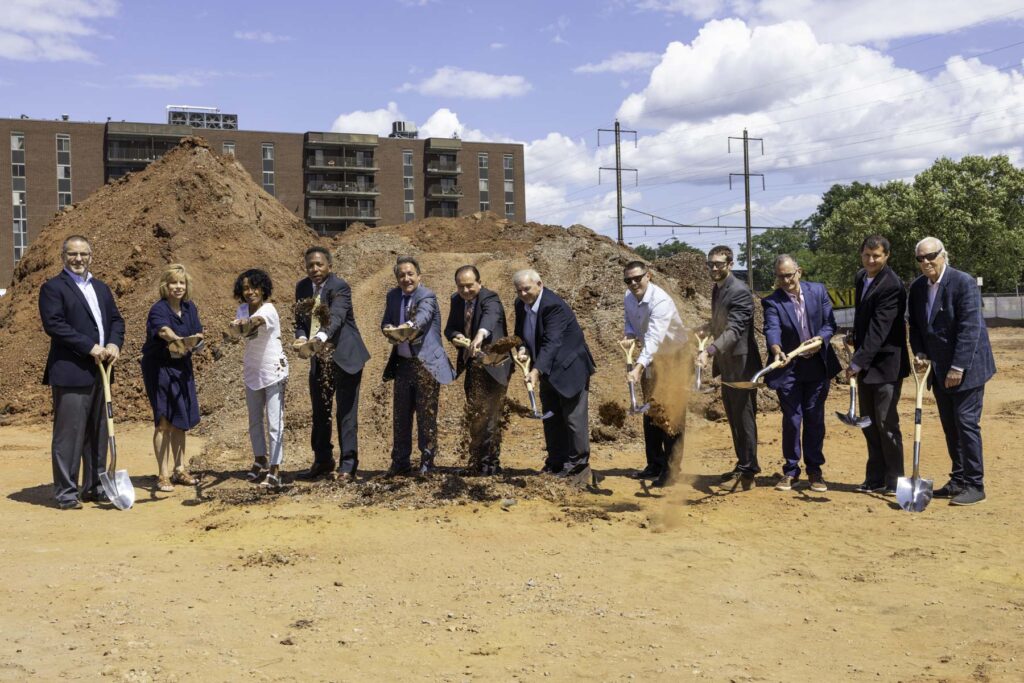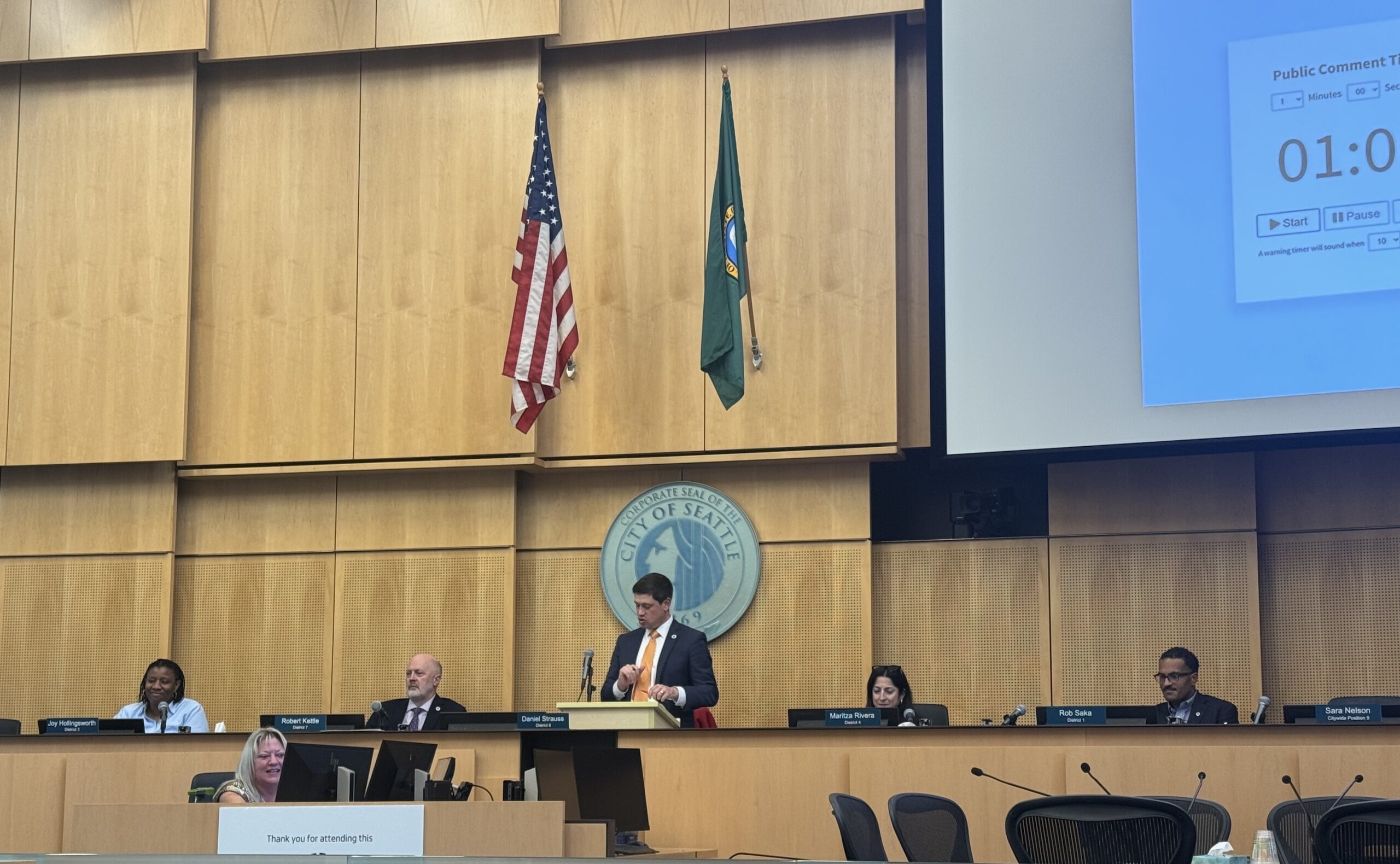LINDEN, N.J. — Hector Consuegra and his son Michael hadn’t enjoyed a home-cooked meal in months. The father and son, unhoused since 2022, rotated between motel rooms and sleeping in their car. But a recent dinner with friends from their old neighborhood changed that, offering the pair a rare sense of normalcy and a break from the emotional toll of living without a fixed address.
“We haven’t had a steak in almost a year,” says Michael, 49, slowly cutting into his food. We ate around the kitchen table in my house, the same one that’s been in my family since I was a kid. Hector and Michael used to live on the same block as me in Linden, New Jersey’s industrial Tremley Point neighborhood, but we’d never shared a meal like this before. Still, for a moment, the room feels like old times, warm and familiar, like the days when our families lived on the same street.
As the night grows darker, we linger at the table, trading stories and memories. My mother joins us after dinner, and together, we flip through photographs Hector and Michael brought—snapshots of holidays, milestones, and pets. We laugh and smile, remembering the way the neighborhood used to feel.

Hector and Michael Consuegra look through old family photo albums in the Salomon family’s kitchen [Credit: Sydney Salomon]
The Consuegras story goes beyond merely losing a house. They’ve lost community, routine, and a sense of place.
“I still remember the day we left the house,” Michael tells me. “We packed what we could, threw it in the car, and drove off with nowhere to go.”
The hardest part was giving up their Dachshund, Dodger. “We sold him because we had nowhere to go,” says Hector. “We still don’t know what happened to him. I think about him every single day.”
Hector and Michael were longtime residents of Tremley Point. Watching them go from neighbors to unhoused made the housing crisis feel much more immediate than abstract to me.
Homelessness in New Jersey has reached a record high. Over 12,600 people are currently without homes, according to the NJ Point-in-Time (PIT) count. Nationwide, the 2024 PIT count recorded 771,480 Americans experiencing homelessness, an 18 percent increase from 2023. The 2024 NJ PIT count reports that 12,680 people were homeless, highlighting the growing crisis. And yet, cities like Linden continue approving high-end developments that promise an urban lifestyle while longtime residents, like the Consuegras, are priced out.
The data reveals that homelessness is driven by systemic instability. According to the NJ Office of Homelessness Prevention, the five leading causes of homelessness across all populations in 2023 were being asked to leave a shared residence, eviction, other unspecified reasons, job income loss or reduction, and relocation.
Displaced in Plain Sight
As the evening goes on, our conversation shifts from dinner to survival. Michael describes their day-to-day: “We pretty much live in a motel, like on weekends—like, like two or three nights a week, sometimes four.” Between sleeping in a plaza parking lot and staying at a motel, they find ways to make do with the least. “The owners there know our situation,” says Michael. “When we go to pay, they give us a discount price. It’s about 10 percent off. So instead of charging us $120 a day, they’ll charge us $100, except on weekends, which is a little more. For some reason, they charge a little more on weekends.”
Local shelters and senior living facilities have a waitlist.
Michael leans back in his chair, still clutching a photo of Dodger. “We try to laugh. Sometimes, you have to,” he says. “But it gets hard pretending everything’s okay when you’re washing your face in a gas station bathroom.”
Full disclosure: My parents, Spencer and Paulette Salomon, have done what they can to help. One winter night, when temperatures dropped, my parents paid for a motel for Hector. Risking losing their storage unit each month, the Salomons offered to store Michael’s cherished music collection.
“I used to just sit back there and play,” Michael explains, pointing at photos of his guitar and stereo collection. “Those were my two babies. The big one and the little one.”
That night over dinner, he tells us, “The cold hits different when you’re trying to sleep in your car. You can’t just pull up a blanket and hope for the best. Your whole body aches.”
My mom tells me, “I try to live by the verse in Luke 12:48: ‘For unto whomsoever much is given, of him shall much be required.’ We’ve been fortunate in our lives, and that means we have a responsibility to help others when we can. Hector and Michael were always kind neighbors. When I found out what happened, I was devastated. I just knew we had to do something.”
My dad offers a landlord’s perspective, drawing from his experience in Newark, N.J. “I’ve seen the prices of rent skyrocket. The average person can’t afford to live anymore because corporate America is buying up all the real estate,” he says. “Investors are building luxury apartments with no rent control, and that’s part of the problem. Rent control means there’s a legal limit on how much rent can go up, which is three or four percent a year. Without that, prices shoot up. Rent control would be a step toward stability.”
Our next-door neighbor, Alice Nalepa, has lived in Linden for over 68 years and witnessed the neighborhood transform. Her yard is often filled with stray cats sunbathing on the porch, offering a kind of cozy continuity as everything around her changes. She remembers a different Linden, where the community was mostly Slovak and Polish, and neighbors were close-knit.
“It’s not the same anymore. I don’t feel the new people are as friendly as the older ones were,” she shares.
She’s also seen significant changes in Tremley Point, especially after Hurricane Sandy tore through the streets in 2012. “All those houses down there were torn down, and now there are new homes being built,” she recalls. “There used to be a school on the corner, but now it’s a senior building.”
She believes Linden is losing its charm. “There are too many apartments going up, and it’s causing a lot of traffic and chaos,” she says. “They’re changing the city too much—it’s losing the beauty it once had.”
A City Rebuilt for Strangers: Linden Luxury Apartments
Linden is rapidly becoming a hub for luxury living, with high-end apartment developments urbanizing the community. Among these new projects is Citivillage, a modern complex offering 113 upscale apartments and promoting “unprecedented luxury living,” according to its website. The development brands itself as “a place that’s redefining urban living,” featuring retail shops, a restaurant, a rooftop terrace, and a Manhattan-bound bus stop offering a 50-minute commute to the city.
Just a short drive away, Meridia Lifestyles I and II, directly across the street from each other in downtown Linden, offer sleek, amenity-packed units with quartz countertops, in-unit laundry, and fitness centers that combine “urban adventure with suburban relaxation,” according to Meridia’s website.
Similarly, The Hartlan, situated in the heart of Linden, markets itself as a place where renters can enjoy both the excitement of city life and the comfort of home, as per its website. The development features 234 studio, one, and two-bedroom residences, landscaped courtyards, co-working lounges, and a vibrant city vibe.
As these developments multiply, the face of Linden is shifting, raising questions about who truly benefits from this wave of upscale living. While marketed as luxurious and modern, these developments are financially out of reach for many in Linden. With average starting rents around $2,000 a month, they exceed what’s considered affordable for the city’s median household income. For low-income residents, seniors, and families facing housing insecurity, like Hector and Michael, options remain scarce.
Citivillage, Meridia Lifestyles I and II, and The Hartlan did not respond to multiple email requests for comment regarding housing affordability and concerns about housing instability.
Another major project reshaping the city is the $120 million OneWest Mixed-Use Development, which is currently under construction to introduce a 334-unit rental complex slated for completion by Spring 2026. According to OneWest’s website, the complex will offer a wide range of layouts, including “one-bedroom, two-bedroom, and versatile one and two-bedroom units with dens.” An expansive amenity deck will feature cozy fire pits, BBQ grills, an outdoor pool, an indoor fitness center, and a game room. Mayor Armstead told TAPinto Linden News, “This luxurious deck will be a sanctuary for leisure and comfort.” The project promises to bring luxury and sophistication, helping to create an urban atmosphere.

Construction crews work on the OneWest development in downtown Linden [Credit: Sydney Salomon]
But this shift comes at a cost. OneWest will replace the Elmwood Plaza, a long-standing commercial center that once housed QuickChek, Linden Retail Specialty Pharmacy, Carvel, Big Blues Sub, and several other small businesses.
As Linden undergoes this transformation, some longtime residents are left wondering: Who is this city being rebuilt for?
Hector said the housing situation feels increasingly hopeless, even after looking for residency in nearby cities like Newark and Rahway. “Even if we’ve been on the list five or six years, we never receive anything,” he said. “They asked me for documentation. I provided it. But we’re still waiting. My son even called, and they said they supported some application, which we never received.”
Michael echoed the same frustration after years of instability. “I don’t see how people can pay two or three thousand dollars for a luxury apartment, unless you’re a millionaire,” he says. “That would mean nothing to you. But for the rest of us, it’s impossible. There’s no section for the affordable community. In other words, they’re not affordable.”
Michael works part-time at ShopRite. “Even with a job, I can’t come close to paying those prices,” he says. “It’s like they’re building a city for someone else.”
The Policy Divide
While in office, President Biden and Vice President Harris made housing equity a central focus, aiming to expand access, reduce costs, and “keep people in their homes,” according to the White House website. As part of those efforts, the administration awarded Newark $4 million in the summer of 2024 through the Pathways to Removing Obstacles to Housing (PRO Housing) program. The initiative supports cities expanding affordable housing and preventing displacement—key goals in New Jersey’s intensifying housing crisis.
According to the city’s website, the PRO Housing grant will help implement updated local land-use regulations known as the Newark Zoning and Land Use Regulations (NZLUR), aimed at speeding up affordable housing production. It will also expand Newark’s Live Newark program, which offers forgivable down payment loans for first-time homebuyers and funds for home repairs. Additionally, the grant will support the Equitable Investments in Newark Communities (EINC) Program, which focuses on building and rehabilitating homes while creating more opportunities for minority- and women-owned developers and contractors.
Mayor Baraka emphasized the city’s priorities in a statement on the city’s website: “Creating affordable rentals and putting homeownership within the reach of residents is a top priority in Newark.” He did not respond to multiple email requests for comment on how the city plans to address homelessness amid large-scale development and gentrification.
However, Newark’s communications director, Frank Baraff, said in an email, “As the mayor of the largest city in N.J., Ras Baraka knows first-hand how difficult it is to balance growth and development while ensuring our lifelong seniors and families can afford to live in our city.”
Baraff said that since taking office in 2014, he prioritized equitable economic growth by keeping longtime Newarkers at the center of development. He outlined six focus areas: renter protections, affordable housing, community-based development, equitable zoning, homeownership programs, and homelessness reduction.
Key initiatives include expanding rent control to small multi-family homes, creating the state’s first Office of Tenant Legal Services, and giving nonprofits priority access to purchase city-owned land. Newark’s Inclusionary Zoning Ordinance requires that 20% of units in new construction be affordable, with preference given to residents.
The city also launched New Jersey’s only municipal land bank, backed minority- and women-led housing projects through the Equitable Investments in Newark Communities initiative, and rewrote zoning codes via the Newark360 Master Plan, shaped by input from over 10,000 residents.
With the recent PRO Housing grant, Newark is expanding down payment assistance, supporting accessory dwelling units, and funding additional affordable housing development. To reduce homelessness, the city grew its outreach teams, added psychiatric support, and began placing chronically homeless residents into 200 renovated apartments through a partnership with the Newark Housing Authority.
Still, some Newark residents remain unconvinced.
As cities like Linden and Newark navigate development and gentrification, national policies like these show how much the current political environment matters: the Biden–Harris administration’s housing agenda, Congress’s willingness to fund new programs, and the push from advocacy organizations are all shaping who gets affordable housing and who doesn’t. The decisions made in Washington directly shape housing access, affordability, and who gets left behind.
But as luxury apartment developments rise across cities like Linden, many residents still question whether federal funding and policy efforts are reaching those most at risk, particularly those who are elderly or disabled and low-income families left behind.
Nasim Stuckey, a five-year resident of Newark’s South Ward, is concerned about how the city will apply the housing policy. “I believe if they made housing more affordable for middle-class families, like me, it would be better,” he says. “People with jobs are finding it harder to keep their homes than people without jobs or those already in low-income housing. It feels like these programs help the individual, not the family.”
Stuckey also voiced concern about Newark’s development trajectory. “The Lionsgate Newark Studios, expected to open in 2026, will gentrify the city, bringing in high-income individuals and families and pushing out long-term residents,” he says. “It’s not addressing homelessness, which is a recurring issue downtown.”

The Lionsgate Newark studio, a $125 million film and television production hub [Credit: Lionsgate]
While the Biden-Harris administration focused on expanding housing access through programs like PRO Housing, Project 2025 introduces a very different plan. The Department of Housing and Urban Development’s (HUD) chapter was written by former HUD Secretary Ben Carson and backed by conservative groups. The document calls for “devolving many HUD functions to states and localities,” aiming to reduce federal oversight and cut back on fair housing enforcement.
It also supports repealing the Affirmatively Furthering Fair Housing (AFFH) rule, which was created to eliminate housing discrimination and promote integration. The document states, “The Biden Administration has issued a proposed rule to replace the Trump Administration’s ‘Preserving Community and Neighborhood Choice’ rule that had repealed earlier rules expanding AFFH enforcement.” This reflects a clear political divide: one side supports using federal policy to protect renters and promote equity, while the other favors reducing federal involvement, even if it means fewer protections for vulnerable communities.
Back at my kitchen table, Michael lingers on a photo of Dodger lying in the grass. He runs a finger across the faded image, smiling faintly. “That was before everything changed,” he says. “That was our yard. That was home.”
Hector leans over his shoulder. “Now, we’re just trying to survive. But I still believe we deserve a place to call home.”
The room goes quiet, the weight of his words hanging in the air. It was a simple dinner, but in that moment, surrounded by stories and snapshots of what used to be, we were reminded of what truly makes a home: safety, love, and the belief that everyone deserves to belong.


